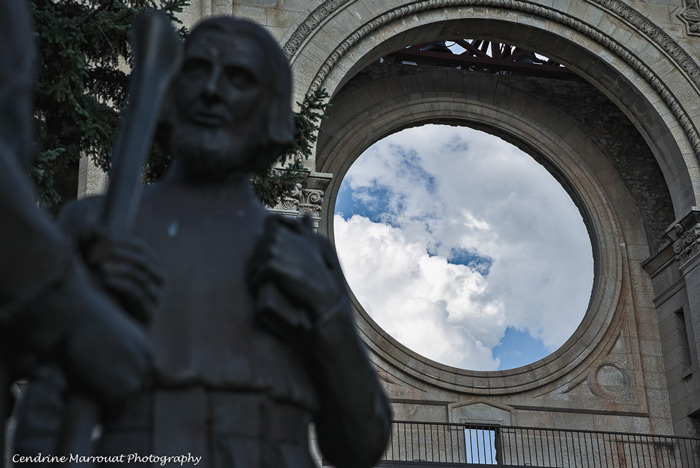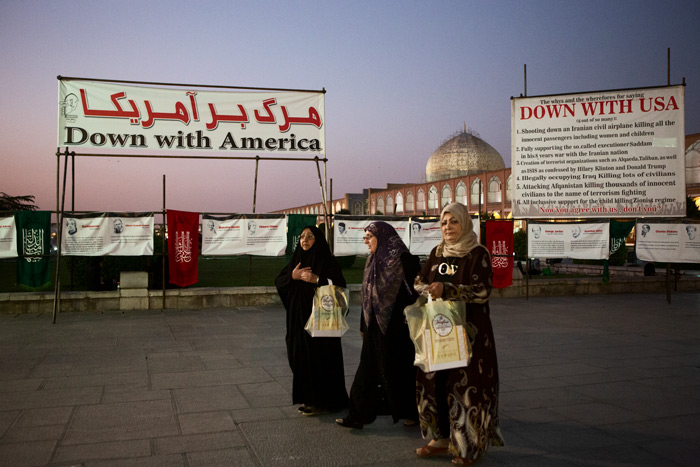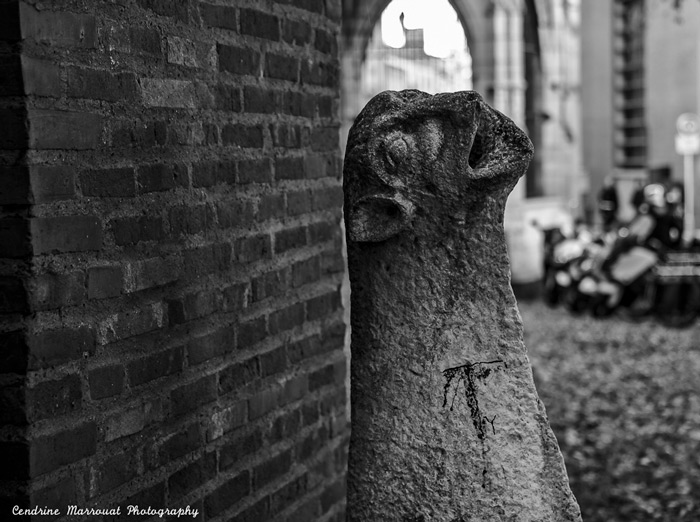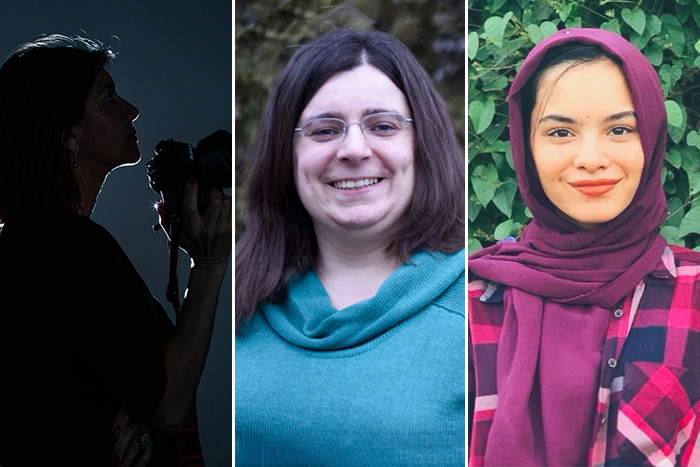I recently had the pleasure of interviewing the skilled and uniquely-talented photographers of the FPoint Collective. Originating from diverse backgrounds, this collective explores potential ways of seeing and interacting with the world through the many facets of photography. They also share the philosophy that the world of photography shouldn’t only entail technical avenues but celebrate the art of storytelling as well.
Thank you for taking the time to participate in this interview and best of luck to all of you with your future endeavors. Your bodies of work are truly inspiring and I can’t wait to see great things from all of you in the future!
Can you tell the readers a bit about yourselves?
Isabel Nolasco: I’m a photographer and a traveler. My kind of photography is documentary and street photography. I like documenting and telling stories about the places I visit and the people I meet.
Cendrine Marrouat: I am a photographer, poet, author, and entrepreneur. I specialize in nature, black and white, and closeup images. I love telling simple stories through my photography.
Hadiya Ali: I am a student and a photographer. I love capturing portraits, black & white images and landscapes. Through photography, I meet new people and learn new stories.
What made you decide to create the FPoint Collective?
Cendrine Marrouat & Isabel Nolasco:
We met online two years ago. At the time, we were part of the same photography collective and got along right away.
After a few months, we started disagreeing with the sharp turn the collective was taking and ended up leaving it on separate occasions. However, we had enjoyed the opportunity to partner with other photographers so much that we decided to create our own collective.
What excites you most about being a part of a collective? And what do you hope to contribute to it?
Isabel Nolasco: A collective allows you to share experiences, information, and knowledge with other members. It will make you grow and provide you with different opportunities to improve your visibility. I hope to contribute to it with my personal vision and skills in order to make it grow.
Cendrine Marrouat: I agree with Isabel and think the same. But she said it better than I ever would.
Hadiya Ali: As Isabel said, it makes you grow, I agree with that. Because of the collective, I have seen new and beautiful talent in a short amount of time.
What do you want your viewers to take away from your work?
Isabel Nolasco / Cendrine Marrouat / Hadiya Ali: Two simple things. 1. That stories are everywhere and that there is no need to overprocess and oversaturate images to show amazing things; and 2. That it takes effort, perspective and time to show people an entire story through our eyes as photographers.
Who are some of your favorite photographers and how did they influence you?
Isabel Nolasco: My favorite photographer of all time is Henri Cartier- Bresson. He’s the “father” of street and candid photography, which is the type of photography I identify myself with. And, I think, the one I do best.
Cendrine Marrouat: There are many excellent photographers. But none can beat Ansel Adams. His images make my heart skip a beat every time I look at them. There is something about his photography that I cannot express with words. When I look at his photos, I feel as though he speaks to me directly.
Hadiya Ali: Brandon Woelfel has been my favourite photographer since my childhood. His work attracted me in the first place because it was unique and also because he only focuses on portraits.
Can you share one of your favorite photographs (from another member of the Collective) and share why you like it so much?
Isabel Nolasco: From Cendrine, I choose the B&W photo she took of the St Boniface Cathedral in Winnipeg, Canada. It has statues and a round window in the background. I like the way it is composed of the different plans giving us a sense of 3-D, a huge accomplishment in photography.

From Hadiya, I choose one the bride she took from top to bottom, with the bride’s eyes closed. The sharpness, the colors, the technique she used produced a fantastic outcome!

Cendrine Marroua: My favorite photograph of Isabel’s is the one she took of a woman walking in Fushimi Inari-taisha, Japan. I love it so much that I will be using it in a future book. Isabel managed to capture the Japanese culture in a magnificent way!

As far as Hadiya is concerned, I choose her black and white photo from our “Wounds of History” theme. The way she framed the arm and tattoo is simple, and yet reveals a lot about what human beings are willing to do to survive. It’s a beautiful photo.

Hadiya Ali: Isabel visited Iran last year and she posted a picture of 3 women in Isfahan standing in front of “DOWN WITH USA” boards. It was a very heartbreaking, yet strong picture. They’ve mentioned all that has been going on between them and America. It is a breathtaking masterpiece.

Cendrine shared a picture in Toulouse, France, a gargoyle. The caption said,”Today questions still haunt old stone.” The picture, the angle, the shades, the caption summed up an extremely valiant and magnificent image.

What do you think makes a good critique vs. a poor critique?
Isabel Nolasco: A good critique is a constructive one, the one people give you out of respect and support, genuinely, to help you grow as a professional. A poor critique is the one you get from people who envy you and can’t handle the fact that you may be better than them.
Cendrine Marrouat: A poor critique is a critique whose goal is to discredit an artist’s work. A good critique is constructive. It is the kind of feedback you need to understand how you can make your work stronger and/or more relatable for your audience.
Hadiya Ali: Any critique in photography is constructive until it comes from a person who has zero knowledge in photography. In a good critique, amendments can be and should be made. A bad critique will make you question your work.
What other collectives do you like to follow and what do you like about their work?
Isabel Nolasco: I follow the collective “Women Travel Photographers”, “Women in Photography”, and “Here and There Mag” because they publish relevant info and feature women and travel photographers, to which I and my work can relate.
Cendrine Marrouat: I follow the same collectives as Isabel and for the same reasons.
What are the benefits (and disadvantages) you find being part of a collective?
Isabel Nolasco: The benefits are related to what I’ve said above, especially the sharing of knowledge and experiences between its members. The disadvantages are the extra time and hard work you have to dedicate to the project in order to make it work.
Cendrine Marrouat: To me, the main benefit is the sense of belonging to a group of like-minded individuals. We want to achieve the same goals and love challenging ourselves.
Each member of our collective comes from a different country. For example, Hadiya, our newest member, lives in Oman and is only 18. Her incredible maturity shows in her work ethics and the way she photographs her subjects.
Isabel has summed up the disadvantages well. A collective takes time and money to run. We have to keep our blog regularly updated, create video content, and share stuff on our social media pages on a daily basis.
With that said, we are very organized. Each member plays her part, so everything runs quite smoothly!
Hadiya Ali: The main benefit is meeting new people and learning to work in the same environment as them. It teaches you to mold and work under every circumstance. Also as I mentioned above, I find new talent very easily through this collective.
The hard part is to manage time. Given the great time difference between my fellow members and I, it sometimes gets intense to work.
What advice would you give to anybody else out there trying to start their own collective?
Isabel Nolasco: Get partners with whom you can relate and get along, who share the same vision and values and are willing to put the same amount of work and commitment in the project as you are.
Cendrine Marrouat: A successful collective is made up of people who are hard-working, dedicated, and share more or less the same vision.
Do a lot of research. Study other collectives. Be organized and see the big picture. Do not launch too early. Lay down the foundation of the “building” before moving on. Each member must be on board and understand their role.
Hadiya Ali: All of the successful people in the world share one common trait. They understand that they need a good amount of time, patience and planning. Unplanned projects always fail.
A good collective also requires great teamwork and members who are willing to spare time and energy to make the collective successful.
What kind of vision do all FPoint Collective members share?
Isabel Nolasco, Cendrine Marrouat & Hadiya Ali: We want to show that photography can and should be for all audiences. Photography isn’t just for an exclusive group of special and gifted people.
What do you hope to achieve through this Collective? How do you see the site evolving in the future?
Cendrine Marrouat: Our goal is to prove that a few passionate people can come together to make photography an exciting artform. Overprocessing and expensive gear will never replace a good eye and a desire to tell good stories.
We haven’t decided how the site should evolve. For now, we are taking things one day at a time.
Isabel Nolasco: I agree with Cendrine, she said it all.
Hadiya Ali: I couldn’t agree more with Cendrine.
What are your future goals for the site? What are some visions you have for the Collective?
Cendrine Marrouat: We just want to continue sharing our love of photography with the world. Of course, we would love to add a few more members. However, if it doesn’t happen, we will remain happy. Each member is uniquely talented.
Isabel Nolasco: I agree with Cendrine, she said it all.
Hadiya Ali: I would love to see our collective get more recognition because of the talent of its members.

Left: Isabel Nolasco Center: Cendrine Marrouat Right: Hadiya Ali
Thank you for interviewing us, Laura! We appreciate your support very much!
You are very welcome, Cendrine. I wish you all the best!
Thank you! Much appreciated, Laura.
You are very welcome, Hadiya. I enjoy viewing your photographs very much and I wish you all the best!
Thanks for featuring FPointCollective and show us your support, Laura!
You are very welcome, Isabel. I look forward to seeing more of your extraordinary work in the future!